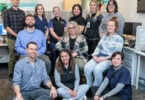Last month, in the course of a week, more than three dozen researchers from around the world pored over 172 studies on COVID-19, hoping to determine just how well physical distancing, face masks and eye protection work. The deadline was extremely tight, unheard of in the world of research. But for St. Paul’s Hospital infectious disease specialist Dr. David Harris and his colleagues, this was urgent. The World Health Organization (WHO) had commissioned the study, hoping to get clarity so it could prepare recommendations.

The conclusion: they work.
The results were published in The Lancet last week. The WHO updated its guidelines a few days later, now advising governments to encourage the general public to wear masks as part of a comprehensive COVID-19 strategy when physical distancing is not possible.
Dr. David Harris says, “No one had systematically appraised all that literature before. It was an honour to be involved in this huge international effort.”

Physical distance: further is better
The study showed physical distance of one metre reduced the risk of infection by 82 percent. This applied to both healthcare and community settings. But every additional metre of separation more than doubled the relative protection.
The other important finding for health care workers was that eye protection is also key in controlling the transmission of COVID-19.
Face masks – even homemade – prevent infection
After months of confusing advice about face masks, the conclusion from this study is clear. Face masks, including homemade cloth masks, reduce the risk of infection by 85 percent overall. Though, not surprisingly, N95 respirators worked best when compared to other masks.
For the public, the results offer some reassurance on the adoption of homemade masks. The WHO’s new guidance specifies how a cloth mask should be made: an inner layer of absorbent material like cotton, a middle layer of non-woven materials such as polypropylene (for the filter) and an outer layer of non absorbent material such as a polyester or a polyester blend.
Canada’s chief medical health officer had previously updated its recommendations on the widespread use of non-medical masks three weeks ago. (Health Canada has instructions on how to make your own cloth mask on its website.) And in B.C., Dr. Bonnie Henry followed suit with the same advice the next day.

But Dr. Harris cautions that masks are not a replacement for the other basic principles of infection control. He emphasizes, “We can’t forget that hand hygiene is important. Touching the mask with your hands, playing with your mask, wearing it on your ear or you chin, that will contaminate your mask and your hands.”
He also notes that mask-wearing has become an acceptable part of our culture over the last few months. He wears a face mask when he goes out, part of the ‘new normal’. “The idea of wearing masks, I’m hopeful, will not die out. This will be with us perpetually.”
For more on The Lancet study with Dr. Harris, please see these media stories on Global News and CBC.





